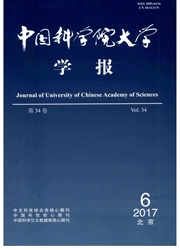

 中文摘要:
中文摘要:
利用全球气溶胶监测网(AERONET)观测资料,借助平面平行辐射传输模式,计算兰州大学半干旱气候与环境观测站(SACOL)、香河站和太湖站多年晴空条件下的气溶胶直接辐射强迫.结果表明,SACOL、香河和太湖地区大气层顶气溶胶日平均直接辐射强迫分别为(-7.2±7.1)、(-11.7±9.5)和(-14.9±8.3)W/m2,地表处分别为(-21.9±12.2)、(-36.5±29.5)和(-42.2±21.0)W/m2,大气中分别为(14.7±9.7)、(24.8±23.0)和(27.3±16.5)W/m2.香河站和太湖站气溶胶对地表的降温和大气的增温大于SACOL站.地表和大气中辐射强迫对气溶胶光学厚度的变化敏感,而大气层顶处敏感性较弱.沙尘气溶胶直接辐射强迫大于所有气溶胶的平均值,且对地表降温和大气增温更明显.
 英文摘要:
英文摘要:
The daily averages of the aerosol radiative forcing (ARF) at the surface and the top of the atmosphere (TOA) were calculated in several years in China. A radiative transfer model (SBDART) was utilized to simulate the solar irradianee values at the surface and TOA by using as input aerosol properties retrieved from AERONET sun photometer measurements. At the AERONET stations at SACOL, Xianghe, and Taihu, the daily mean ARF values were ( -7.2 ± 7.1 ), ( -11.7±9.5), and ( -14.9 ±8.3) W/m2 at the TOA; ( -21.9 ±12.2),( -36.5 ±29.5), and (-42.2±21.0) W/m2 at the surface; and (14.7 ±9.7), (24.8 ±23.0), and (27.3 ±16.5) W/m2 in the atmosphere, respeetively. The surfaee eooling and the atmosphere warming caused by aerosol at Xianghe and Tiahu stations were greater than at SACOL. The daily ARF of the desert dust aerosol was significantly greater than the total average of aerosol, especially at the surface and in the atmosphere, showing that dust can produce more obvious surface cooling and atmosphere warming.
 同期刊论文项目
同期刊论文项目
 同项目期刊论文
同项目期刊论文
 Lidar measurement of planetary boundary layer height and comparison with microwave profiling radiome
Lidar measurement of planetary boundary layer height and comparison with microwave profiling radiome Macrophysical and optical properties of mid-latitude cirrus clouds over a semi-arid area observed by
Macrophysical and optical properties of mid-latitude cirrus clouds over a semi-arid area observed by 期刊信息
期刊信息
